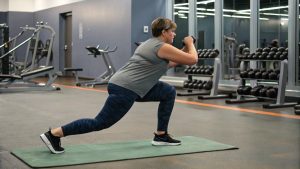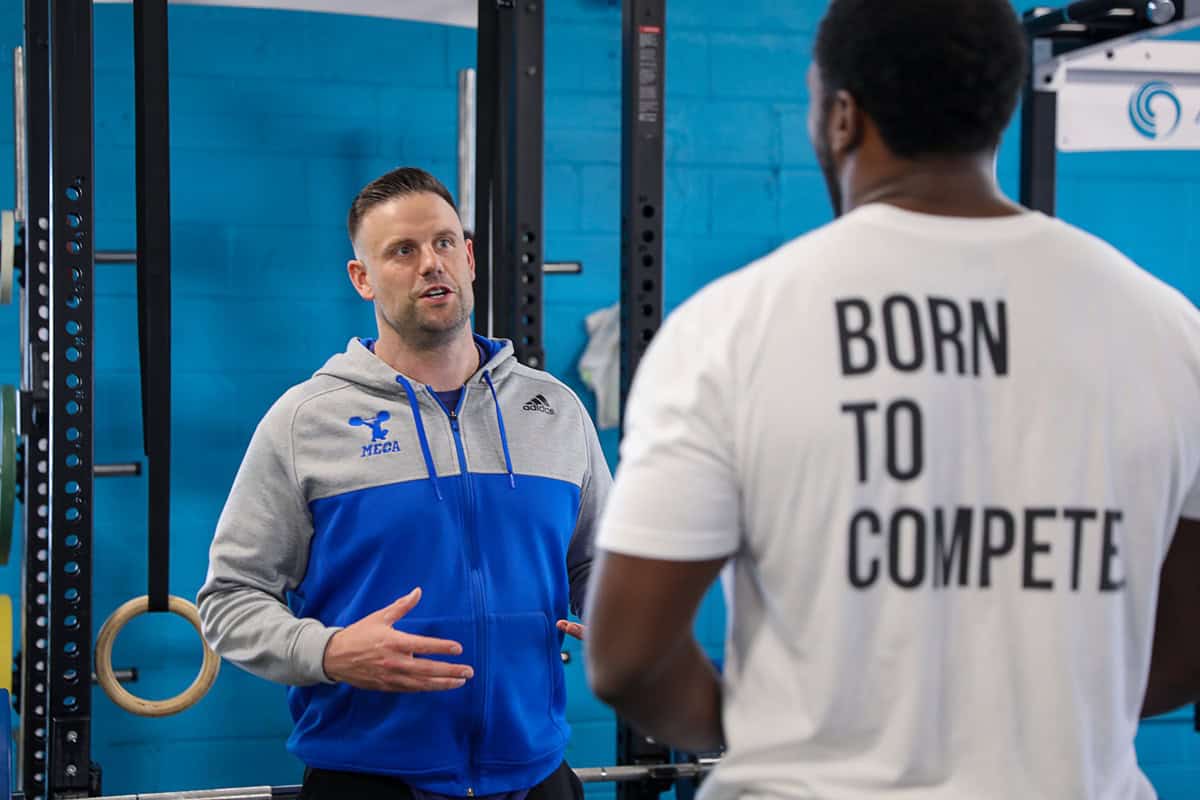High Level Training Strategies for Men to Stay Strong and Healthy
Training in your 40’s and beyond doesn’t mean slowing down but training smarter. By prioritizing physical fitness and choosing the RIGHT stimulus, you can dramatically improve your health and strength as you age. In fact, many of the men who train with us are in the top 5% of physical strength relative to their age group. In this article I want to communicate three things.
1) What men over 40 should prioritize to improve their fitness levels
2) What to do if you have stalled out or hit a plateau. And what you can do in the next 6 weeks to supercharge your results.
3) How being physically strong and healthy first, improves mental and emotional wellness for men.
Many of us see our 40s and beyond as the “halfway point,” if we’re lucky. Perhaps we’ve observed what “retirement age” was like for our parents and realize that’s exactly what we want to avoid. One of my favorite quotes is, “Physical health is the crown jewel of grey hair.” When we get into good, physical shape; it not only gives us more time but has the potential to generate a significantly higher quality of life too. A great example of this is Bill Phillips, who has been training with us for 12 years. Bill started training at MECA in 2012 when he was 63 years old and unable to perform a chin up. Fast forward to 2024, and Bill has set a personal record of 12 chin-ups at 75 years young. He now does sets of 7–8 reps at a time. Strength training, coupled with flexibility work, has allowed him to continue playing sports at a high level and run without pain. He is lean, healthy, and stronger than most 20-year-olds! No matter the age, you can dramatically improve your strength levels. A fun fact, most world records in speed sports are set in the late 20s or early 30s. Almost all world records for strength in powerlifting are set in the 40s.
Take Away 1) You can get into incredible shape by doing these three things
- Prioritize Strength Training: It has the highest return on investment compared to any other form of exercise. When you train, you stimulate your body’s response to grow new tissue. You also dramatically engage the brain, improving signaling and the impulse for muscles to contract. When you must move a “load through space”, which is strength training, it is extremely challenging for the brain in a good way. Not only can strength training grow muscle tissue, it also can improve the strength of your bone, tendons, and ligaments. Being strong inside the joints and having quality muscle tissue is one of the greatest predictors of longevity according to Tufts University Neuroscience and Medical Laboratory. Strength Training should be done 50-60 minutes a day 3-4x a week for individuals to see optimal progress in strength and muscle mass.
- Stretching/flexibility work: The two things we lose as we age are strength and flexibility. Spend 15 minutes, 5–6 times a week, stretching. I’m all about ROI and stretching and flexibility work offers a very high ROI. The benefits of stretching are
- Increase range of motion
- Increase blood flow
- Improvement of posture
- Reduction in pain – among many other things
- I will attach our stretch guide that is a printable PDF for you to download. This stretch guide is simple to perform and really helps improve range of motion.
- Play a Sport You Love or just go for a daily walk: Movement and fun here is key. Golf, pickleball, tennis, biking, swimming—they’re all great. Bonus points for any sport that involves swinging a racket or responding to external stimuli, like mountain biking. But even a daily 30–45-minute walk has big health benefits such has improving blood flow and circulation which raise serotonin levels.
Take away 2) if you’re stuck in a rut here is how to get going!
Many of us—I’d say at least 70 to 80 percent—feel like we’re in a rut with our health and physical fitness right now. Here’s the fastest way to break a plateau and make a dramatic change: prioritize your health for a 6-week time block! For 42 days, go all-in on your health and fitness. That’s just over 1/10th of a year. Here’s exactly what to do:
- Do the MRT Food Sensitivity Test: This is a blood test that identifies food intolerances and sensitivities. Some of the “healthy foods” we eat could actually be causing inflammation. What’s good for me to eat might not be good for you. This test personalizes your nutrition. I’ve seen clients lose 20 pounds of inflammation and water weight in just 6 weeks, with dramatically improved energy levels and sleep.
- Prioritize 90 Minutes a Day for Your Workout/Activity Time: focus on strength training. This could be a 60-minute workout and a 15-minute drive back and forth to the gym. Taking this daily time is key. On non-training days, make sure to move! Play a sport you enjoy or maybe take a 60-minute casual walk with a loved one.
- Take 90 minutes – every day to exercise. This can be the difference to living well into your 80s and beyond or not.
- The mindset shift that needs to happen goes from – “I know I need to be healthy” to “I want to be healthy, and this is what I am going to do to be healthy”
Take Away 3
Record the Journey: Spend 5 minutes each night reflecting—very few people will do this, but it’s so important. Many of us struggle with identity and purpose during our journey in life. We get caught up in providing for others and forget to connect with ourselves. Taking 5 minutes to record your health and fitness journey over the next 6 weeks will allow you to connect with yourself in ways you probably haven’t in years. One quote I love from business coach and author Dan Sullivan is, “Always make your future bigger than your past.” Reflection connects your past to your future—who you are now and who you want to be when you “grow up,” and helps you get clearer each day on your mission and purpose in life.
Final Thoughts: You can get into incredible shape in your 40s and beyond by dedicating around 8 hours a week to your health. Most of us spend 16 or more hours a week watching some sort of media, with little to no return on that time. Cut that in half, and instead, invest your most valuable resource—your time and attention—into getting healthy. Here’s your checklist
- 3–4 hours a week of strength training
- 90 minutes a week of stretching/flexibility work – 15 minutes a day
- 2–3 hours a week of playing sports or doing activities you love
- Individualized nutrition for your body
- Spend 5 minutes in reflection – it’s a game changer.
With Gratitude and Love,
P.S. please feel free to ask any questions you might have on this article or in fitness in general I would be happy to respond! –
Here is the link for the downloadable stretch guide –
Here is the link to learn more about LEAP food sensitivity testing –
To book an assessment click here to our website and fill out the contact form.














